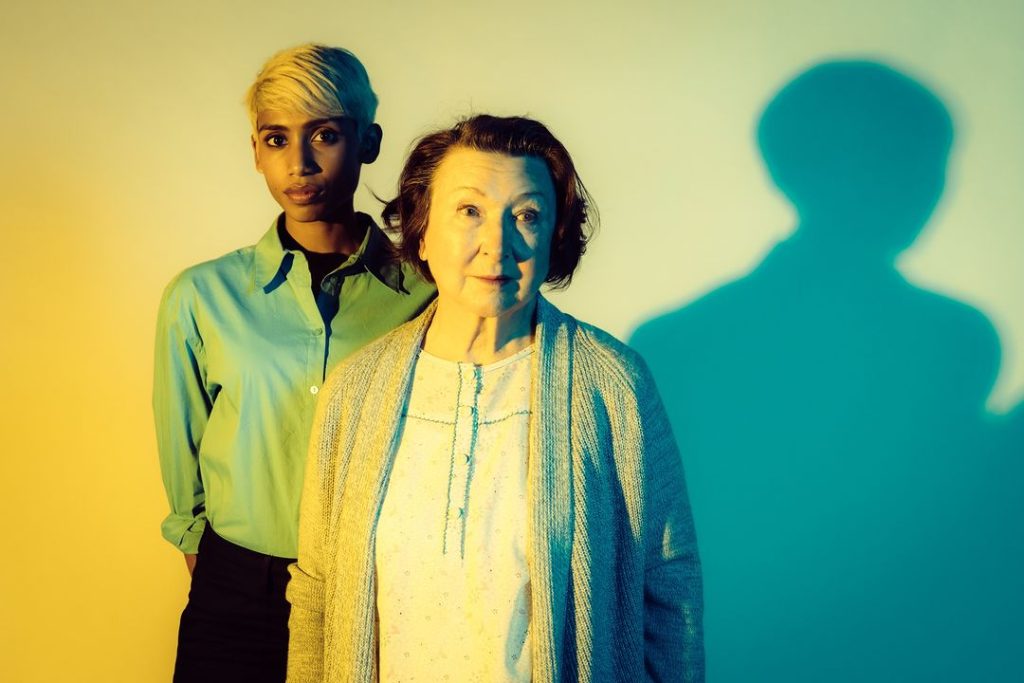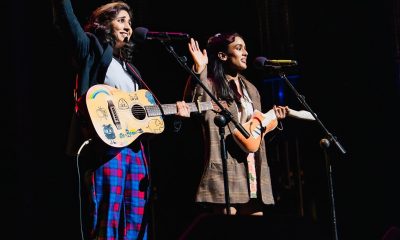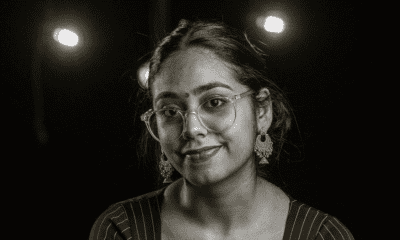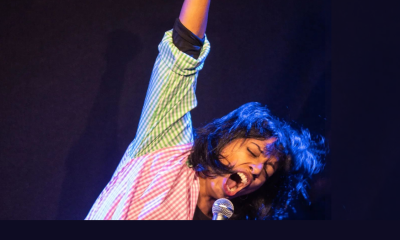Arts
South Asian Australian Shamita Siva Showcases Her Versatility In Vidya Rajan’s Dark Comedy ‘Crocodiles’
In conversation with South Asian Australian Shamita Siva, who plays Neela and Priya in Vidya Rajan’s ‘Crocodiles’.

Picture this: a suspicious death in an aged-care facility descends into dark, comedic chaos.
Intrigued?
Then, slip on your trusty birk-and-sock combo, pair it with your most treasured, thrifted turtleneck and hightail down to Northcote Town Hall Arts Centre to catch Crocodiles—a new play by celebrated comedian, writer, and playwright Vidya Rajan. Presented by Darebin Arts Speakeasy and Elbow Room, the black comedy unfurls in Melbourne/Naarm’s northside nirvana from 24 May 2023 to 4 June 2023.
Shedding light on the exploitation rife within the aged-care system in Australia, Rajan’s Crocodiles is “a heartfelt and oddly humorous piece about the death of a friendship and the lengths that people will go to hold onto their dreams and reputations”, says Shamita Siva, who plays both Neela and Priya in the play. What’s more, Crocodiles features a stellar cast and crew of South Asian Australian creatives, including Shamita Siva, Rachel Kamath, and Saieesh Shanmugarajah. You can grab your tickets here.
To mark the opening of Crocodiles, Brown Boy Mag sat down (virtually) with Shamita Siva—actor, director, dancer, choreographer, and more—to chat about being a third culture kid, wearing multiple creative hats, and of course, Crocodiles.
Our conversation has been edited for clarity and concision.
Brown Boy Magazine: Who is Shamita Siva? Can you tell us a bit about yourself? Not only are you an actor, but you’re a writer, director, dancer, choreographer, and movement consultant too. Can you tell us about your journey to pursue a career in the creative arts?
Shamita Siva (SS): Hello! I’m Shamita Siva—a creative who wears too many hats! I didn’t embark on my career in arts intending to do so many things, but seven years later, I’m still doing it all. Partly, it’s probably because I thrive when I can split my focus (hello, ADD brain). And also, my creative brain is often focused on the big picture; therefore, it lends itself well to directing and curating.
I started as a dancer, attending classes from age four to the end of high school. My mum, a competitive Latin dancer, definitely influenced me. I loved jazz and tap but desperately wanted to quit ballet at ten. She insisted I hold on for a little longer, and a year later, I found ballet exciting again. In high school, I fell in love with theatre, especially plays and performance art. Although I tried singing, I never really gelled with the musical theatre world. After graduating, I embarked on a BA in Performing Arts at Monash University and trained in Melbourne and LA (at Stella Adler AOA). I’ve been lucky to be working in the arts ever since.
BB: Can you tell us about your characters in Vidya Rajan’s new play, Crocodiles? What’s Crocodiles about, and what can we expect from it?
SS: I play two characters: Neela Taggar and Priya Patel. Neela is a young migrant worker striving to finish her aged care certificate (and best friends with Rachel Kamath’s character Sandhya), while Priya is an overwhelmed resident doctor at the aged care centre where Neela and Sandhya work. Everything is turned upside down when there is cause for concern over the death of one of the residents, Helen. Charges could be pressed, and careers are on the line, but if everyone cooperates, everything could be swept under the rug.
Crocodiles is a heartfelt and oddly humorous piece about the death of a friendship and the lengths that people will go to hold onto their dreams and reputations. It also gives a voice to characters who don’t usually get to be loud and imperfect. Neela is a particularly fun character to play. She’s annoying and mouthy but also pragmatic—we all have a Neela in our lives. Priya is also an interesting character as she is quite different to Neela, being an Indian-Australian who benefits from her position of power.
BB: You were born in Malaysia, but have lived and performed across the world. Can you tell us about your background? And has your South Asian Australian heritage influenced your art?
SS: I’m Malaysian/Indian. I was born in KL but only lived there for a year before my parents decided to live the ‘expat life’. They chose to re-settle somewhere entirely new—Brunei. The plan was to only be there for a few years, but I completed all of high school there. Living there was interesting because although it neighbours Malaysia, Brunei was always much more conservative. The community was also pretty transitory, so I found myself making friends and then losing them to other parts of the world again and again.
If you’re a third-culture kid, you’ll know the feeling of finding a sense of home everywhere but simultaneously feeling like you aren’t from anywhere.
It wasn’t until I came to Melbourne that I really started to embrace my culture. I just didn’t have many South Asian artists to look up to, and I had only studied Western forms of dance and theatre. However, when I got to university, I became very interested in Hindu mythology and Indian contemporary theatre. Something just clicked, and I felt a deeper connection and appreciation for styles such as Bharatanatyam. My mum studied it when she was young, and my only understanding of it was through her stories. Picking up Bollywood influenced me to experiment with Bollywood fusion styles and push the boundaries of what we define as Indian contemporary dance.
BB: As a South Asian Australian artist, have you experienced any unique challenges in your career?
SS: I certainly have. The challenges are different now compared to when I first started. There used to be a time when casting briefs were SO specifically exclusionary, even when they didn’t need to be. I remember having a real issue finding my ‘niche’ because I was either ‘too brown’ or ‘not brown enough’. Unfortunately, this is sometimes still the case with film and TV, and it’s the reality for many of us who make work that is as multifaceted as our own cultural identities.
BB: What advice would you give to other South Asian Australian performing artists who are looking to make their mark in the creative arts?
SS: Working in the creative industry in Australia is bloody difficult but also incredibly rewarding if it’s what fuels you. Many of us have multiple income streams to keep our creative careers afloat during off-peak seasons. However, don’t let your South Asian parents scare you into thinking you have to get your master’s degree before you become a creative because, let me tell you, it’s far too easy to let the system hook you with job stability and standardised hours.
I attempted law for a year before realising it would be wasted on me, but I had been brainwashed by the idea that I had to have a fallback career. If you really want to create, just go for it and invest in courses and training that will fuel and refine your skills. There are many more artist-friendly backup jobs around than you think, and we always find a way to make it work!
Don’t box yourself in as a South Asian actor/dancer/ comedian/whatever else. Yes, it’s a part of your identity, and you should be proud of that, but remember that you bring so much more! Don’t let it limit the roles you go for or the choices you make.
Brown Boy Magazine (@brownboyau) celebrates worship-worthy tastemakers and changemakers in the South Asian Australian diaspora (without taking itself too seriously).

You may like


Here Are Some Shows by South Asian Creatives to Catch at the Melbourne Fringe Festival


Indian-Australian Playwright Pratha Nagpal’s ‘Maa Ki Rasoi’ is a Love Letter to Her Mum


‘It’s a Good Time To Be a Brown Woman’: Sri Lankan-Australian Comedian Sashi Perera On Her Debut Solo Show ‘Endings’, Backing Yourself, and Why Internet Trolls Should ‘Just Have A Maz’
